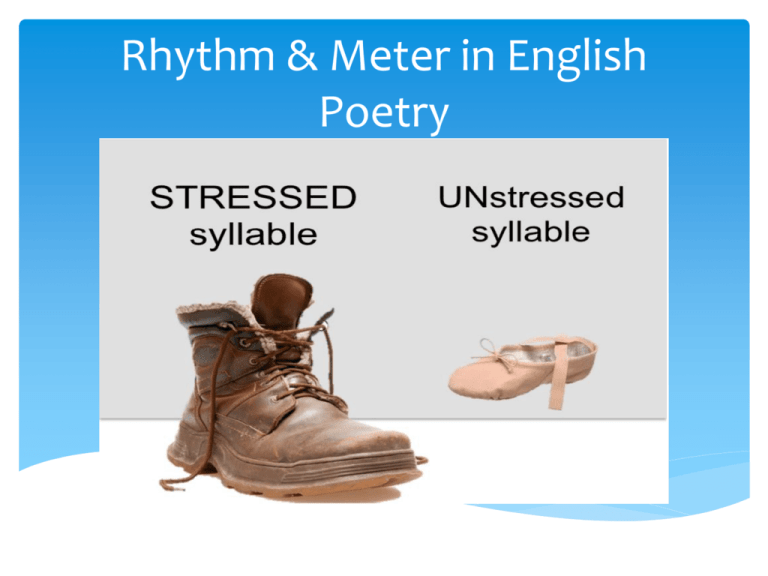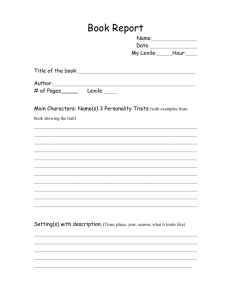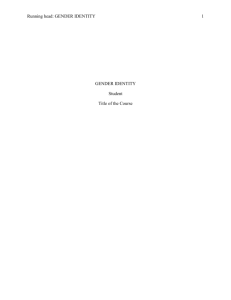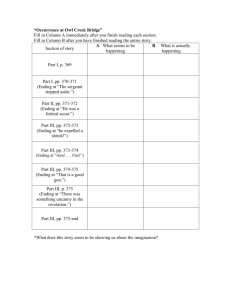File
advertisement

Rhythm & Meter in English Poetry Five basic rhythms of varying stressed (/) and unstressed (v) syllables. Each unit of rhythm is called a "foot" of poetry. IAMBIC (v /) : That time of year thou mayst in me behold TROCHAIC (/ v): Tell me not in mournful numbers SPONDAIC (/ /): Break, break, break/ On thy cold gray stones, O Sea! Meters with three-syllable feet ANAPESTIC (x x /): And the sound of voice that is still DACTYLIC (/ x x): This is the forest primeval, the murmuring pines and the hemlock (a trochee replaces the final dactyl) Lines and Feet Each line of a poem contains a certain number of feet of iambs, trochees, spondees, dactyls or anapests. A line of one foot is a monometer, 2 feet is a dimeter, and so on— trimeter (3), tetrameter (4), pentameter (5), hexameter (6), heptameter (7), and octameter (8). Examples Here are some more examples of the various meters. 1. That time | of year | thou mayst | in me | behold 2. Tell me | not in | mournful | numbers 3. And the sound | of a voice | that is still 4. This is the | forest pri | meval, the | murmuring | pine and the | hemlocks Answers 1. iambic pentameter (5 iambs, 10 syllables) That time | of year | thou mayst | in me | behold 2. trochaic tetrameter (4 trochees, 8 syllables) Tell me | not in | mournful | numbers 3. anapestic trimeter (3 anapests, 9 syllables) And the sound | of a voice | that is still 4. dactylic hexameter (6 dactyls, 17 syllables; a trochee replaces the last dactyl) This is the | forest pri | meval, the | murmuring | pine and the | hemlocks Masculine and Feminine Endings Masculine ending refers to a line ending in a stressed syllable. A Feminine ending describes a line ending in a stressless syllable. For example, in the following couplet by Longfellow, the first line has a feminine ending and the second a masculine one. Tell me not, in mournful numbers,Life is but an empty dream!When a masculine ending is rhymed, the result is called a masculine rhyme. For example, in the following couplet by Longfellow, the first line has a feminine ending and the second a masculine one. Tell me not, in mournful numbers, Life is but an empty dream! When a masculine ending is rhymed, the result is called a masculine rhyme.




